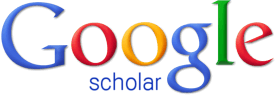COMPARISONS BETWEEN MEASUREMENT AND CALCULATION METHODS IN OBTAINING VIRTUAL WATER FOR HOME MADE YOGURT
Abstract
Keywords
Full Text:
PDFReferences
Adolfsson, O., Meydani, S. N., & Russell, R. M. (2014). Yogurt and gut function. The American Journal of Clinical Nutrition, 80(2), 245256.
Chen, C., Zhao, S., Hao, G., Yu, H., Tian, H., & Zhao, G. (2017). Role of lactic acid bacteria on the yogurt flavour: A review. International Journal of Food Properties, 20, S316S330.
Duan, C. & Chen, B. (2016). Virtual water embodied in international energy trade of China. Energy Procedia, 88, 94-99.
El-Abbadi, N. H., Dao, M. C., & Meydani, S. N. (2014). Yogurt: role in healthy and active aging. The American Journal of Clinical Nutrition, 99(5), 1263S1270S.
Hassing, J., Ipsen, N., Clausen, T. J., Larsen, H., & and Lindgaard-Jrgensen, P. (2009). Integrated Water Resources Management in Action. Paris: UNESCO.
Hoekstra, A. J. (2008). Water neutral: reducing and offsetting the impacts of water footprint. Delft: UNESCO-IHE Institute for Water Education.
Hoekstra, A. J., Chapagain, A. K., Aldaya, M. M., & Mekonnen, M. M. (2011). The water footprint assessment manual, setting the global standard. London: Earthscan.
Kambuaya, B. (2014). Peraturan Menteri Lingkungan Hidup Republik Indonesia nomor 5 tahun 2014 tentang Baku Mutu Air Limbah. http://neo.kemenperin.go.id/files/hukum/17%20 Permen%20LH%20th%202014%20No.%2005%20Baku%20Mutu%20Air%20Limbah.pdf. Accessed 20 December 2018.
Kroger, M. & Weaver, J. C. (1973). Confusion about yogurt-compositional .and otherwise. ]. Milk Food Technol., 36 (7), 388-391.
Mekonnen, M. M., Pahlow, M., Aldaya, M. M., Zarate, E., & Hoekstra, A. J. (205). Sustainability, Efficiency and Equitability of Water Consumption and Pollution in Latin America and the Caribbean. Sustainability 7: 2086-2112.
Moore, J. B., Horti, A., & Fielding, B. A. (2018). Evaluation of the nutrient content of yogurts: a comprehensive survey of yogurt products in the major UK supermarkets. BMJ Open 2018;8:e021387.
Mulyawan, E. (2017). The Science of Yogurt. https://scienceandfooducla.wordpress.com/2017/ 07/04/the-science-of-yogurt/. Accessed 20 December 2018.
Natyzak, J. L., Castner, E. A., DOdorico, P., & Galloway, J. N. (2017). Virtual Water as a Metric for Institutional Sustainability. Sustainability, 10(4), 237-245.
Orlowsky, B., Hoekstra, A. Y., Gudmundsson, L., & Seneviratne, S. I. (2014). Today?s virtual water consumption and trade under future water scarcity. Environ. Res. Lett. 9 074007, 1-10.
Pakistan Observer (2017). 4500 litres adulterated milk wasted by PFA. https://pakobserver.net/ 4500-litres-adulterated-milk-wasted-pfa/. Accessed Feb. 18, 2019.
Pixabay (2017). Fluid pouring in pint glass. https://www.pexels.com/photo/clean-clear-cold-drink-416528/. Accessed Feb. 18, 2019.
Pixabay (2019). Permainan air. https://pixabay.com/id/fotografi-highspeed-air-setetes-air-2435544/. Accessed Feb. 18, 2019.
Richmond, M. L., Chandan, R. C. & Stine, C. M. (1979). Yogurt - A Compositional Survey in the Greater Lansing Area. Journal of Food Protection, 42 (5), 424-426.
Yogurt - A Compositional Survey in the Greater Lansing Area. Robert, F. S. (1985). Measurement theory. New York: Cambridge University Press.
Rul, F. (2017). Yogurt Microbiology, Organoleptic Properties and Probiotic Potential. In: Fermented FoodPart II: Technological Interventions, Ray, R. C. & Montet, D. (eds.). ISBN 978-1-1386-3784-9.
Salmoral, G. & Yan, X. (2018). Food-energy-water nexus: a life cycle analysis on virtual water and embodied energy in food consumption in the Tamar catchment, UK. Resources, Conservation & Recycling, 133, 320-330.
Satriyo, P., Pawitan, H., Purwanto, M. Y. J., & Hidayat, Y. (2017). Water footprint analysis in Krueng Aceh Watershed Aceh Province, Indonesia. Aceh Int. J. Sci. Technol., 6(3), 86-96.
Shabbir, F. (2018). Rawalpindi Cantonment Board,dispose Off 475 Liter Milk,confiscated Five Truckloads. https://www.urdupoint.com/en/pakistan/rawalpindi-cantonment-board dispose-off-475-l-448351.html. Accessed Feb. 18, 2019.
Sommerfeldt, J. L. & Baer, R. J. (1986). Variability of Milk Components in 1705 Herds. Journal of Food Protection, 49, 729-733.
Souissi, A., Hammami, R., Stambouli, T., & Benalaya, A. (2017). Blue and green virtual water in the international trade of strategic agricultural products of Tunisia. Journal of new sciences, Agriculture and Biotechnology, 43(4), 2363-2373.
Sun, S., Wang, Y., Engel, B. A., & Wu, P. (2016). Effects of virtual water flow on regional water resources stress: a case study of grain in China. Science of the total Environment, 871-879.
Tappin, T. (2015). Why goat milk shampoo?. https://goatmilkskincare.com/goat-milk-shampoo/. Accessed Feb. 18, 2019.
USFDA (2018). Title 21--Food and Drugs, Chapter I--Food and Drug Administration, Department of Health and Human Services, Subchapter B--Food for Human Consumption, Part 131 -- Milk and Cream, Sec. 131.200 Yogurt. https://www.accessdata. fda.gov/scripts/cdrh/cfdocs/cfcfr/CFRSearch.cfm?fr=131.200. Accessed 20 December 2018.
Ussami, K. A. & Guilhoto, J. J. M. (2018). Economic and water dependence among regions: the case of Alto Tiete, Sao Paulo, Brazil. EconomiA, 19, 350-376.
Vanham, D. (2013). An assessment of the virtual water balance for agricultural products in EU river basins. Water Resources and Industry, 1-2, 49-59.
Weerathilake, W. A. D. V., Rasika, D. M. D., Ruwanmali, J. K. U., & Munasinghe, M. A. D. D. (2014). The evolution, processing, varieties and health benefits of yogurt. International Journal of Scientific and Research Publications, 4 (4), 1-10.
Wijonarko, S., Sirenden, B. H., Maftukhah, T., Rustandi, D., Darmayanti, N. T. E., & Qiyaman, D. (2019). Embedded water for home industry yogurt: a study for saving potential of water to face climate change. To be published.
Winpenny, J. (2009). Investing in information, knowledge and monitoring. Paris: UNESCO.
WWAP (2009a). Water the blue web that unites us, a concept paper for the 2009 G8 Summit in LAquila, Italy. Perugia: UNESCO World Water Assessment Programme.
WWAP (2009b). Water in a changing world, the United Nations World Water Development Report 3. Perugia: UNESCO World Water Assessment Programme.
WWAP (2009c). Messages for Business Leaders. Perugia: UNESCO World Water Assessment Programme.
Yang, H., and A. Zehnder (2007). Virtual water: an unfolding concept in integrated water resources management. Water Resour., 43, W12301.
Zhao, X., Li, Y. P., Yang, H., Liu, W. F., Tillotson, M. R., Guan, D., Yi, Y., & Wan, H. (2018). Measuring scarce water saving from interregional virtual water ?ows in China. Environ. Res. Lett., 13 054012, 1-9.
DOI: http://dx.doi.org/10.31153/instrumentasi.v43i2.173
Copyright (c) 2019 Instrumentasi

This work is licensed under a Creative Commons Attribution-NonCommercial 4.0 International License.
Copyright © 2015 Jurnal Instrumentasi (p-ISSN: 0125-9202, e-ISSN:2460-1462). All Rights Reserved.

This work is licensed under a Creative Commons Attribution-NonCommercial 4.0 International License.





